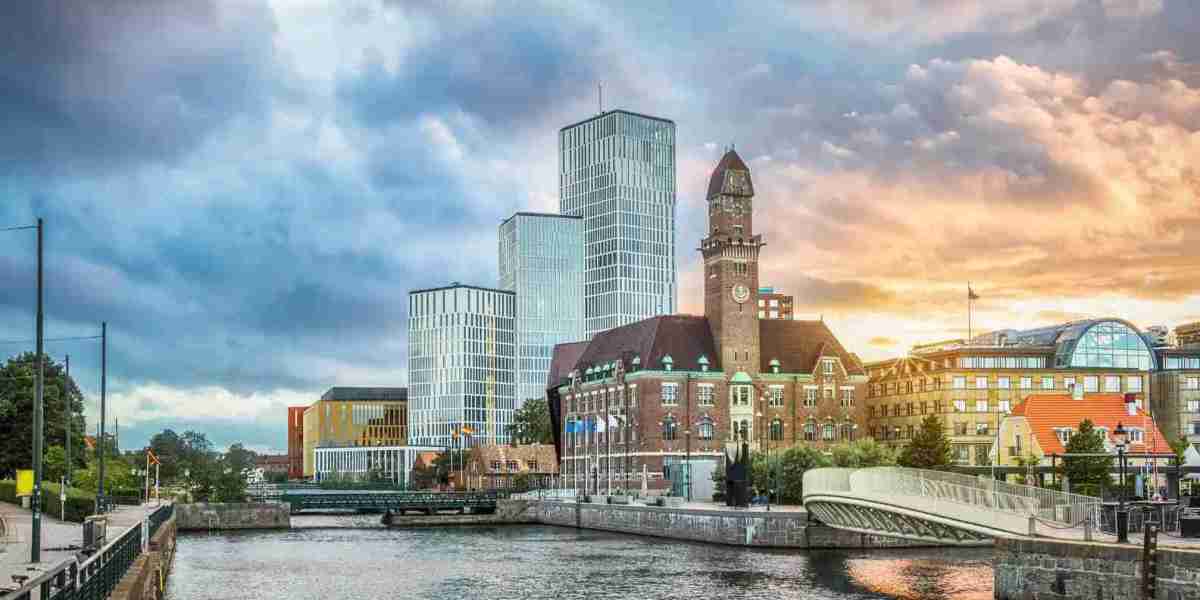Frequently overlooked by international travelers as a Swedish suburb of nearby Copenhagen, Malmö is often depicted as a hotbed of controversy thanks to a headline-grabbing mix of gang crimes and far-right provocation. Yet despite its PR problems, it takes all of five minutes in the capital of the southern Skåne region to fall in love with this city of wonderful contradictions.
While it’s debatable that Sweden actually deserves to host this year’s Eurovision (justice for Austria’s banger about Edgar Allen Poe!), few Swedish cities are as overdue for the international spotlight as Malmö. In juxtaposition to Sweden’s more monocultural cities, Malmö has a verve to it that comes, in part, from its status as one of the youngest and most culturally diverse cities in Scandinavia.
Formerly part of Denmark, Malmö’s 700-plus years of history coexist beautifully with its modernist leanings. In this city of roughly 350,000, an ancient castle seems perfectly at home in the shadow of an artistically designed skyscraper, and time-honored Swedish traditions live in harmony with those of an immigrant community that represents 170 nationalities. It’s a 16th-century military stronghold and shipping town that’s fully embraced modern arts in its galleries and public murals; a city whose love of local seasonal ingredients informs cuisine both traditional and hybridized; and whose quirks, progressive ideals and friendliness run counter to a bad-faith narrative that’s kept far too many visitors—foreign and domestic—at arm’s length.
Malmö is a low-key skeleton key: A city that demands to be savored in person that also serves as a waypoint to the region’s most exciting cities and natural landscapes. That makes it a double threat: A highly underrated travel destination in its own right that also opens the door to the world around it.
Best neighborhoods and attractions to visit in Malmö
Stortorget/Lilla Torg
Malmö’s main square, Stortorget, is a total time warp. Dating back to the 1500s, it’s surrounded by late-gothic architecture and the constant hum of tourists walking around a huge bronze statue of King Charles X Gustav and the city’s oldest building, the staggering Saint Peter’s Church.
The cobblestone streets lead to the always bustling Lilla Torg, the city’s other town square. Here, you’ll find the sidewalks outside of the countless bars and cafes bustling with a combination of tourists and locals sipping coffee and wine and taking in as much vitamin D as possible. This is the truly Malmö’s epicenter, where its ancient history and modernism converge in a sea of art galleries, boutique shops, cafes, busy pubs and eateries ranging from mom-and-pop stalwarts to haute restaurants tucked into ornate buildings dating back to the Middle Ages.
Västra Hamnen
Swedish’s coastal communities do a tremendous job of preserving their industrial past while updating it for current trends around hospitality and sustainability. Malmö’s Western Harbor (Västra Hamnen) is a prime example. Here you’ll find a serene seaside esplanade that passes the city’s must-visit Ribersborg Beach, a busy skatepark that’s helped make Malmö a magnet for international skaters, laid-back bars and cafes and rows of modern energy-efficient apartments. It’s also where you’ll find Turning Torso, which until recently clocked in as Scandinavia’s tallest skyscraper before being overtaken by Gothenburg’s also oddly named Zipper. Towering over the city, the building’s corkscrew design is instantly recognizable from afar, but becomes downright trippy when you stare up at it from the base.
Möllevången
Sweden, on the whole, isn’t exactly what one would call diverse. Yet Malmö has emerged as a true melting pot. Nowhere else is that diversity more apparent and celebrated than in Möllevången, the city’s increasingly hip multicultural epicenter. Stroll the neighborhood’s namesake market and the spice, produce, music, crafts and food stalls provide a multisensory immersion into the cultural diaspora in miniature. Möllevågen is also home to the city’s first Syrian restaurant, Shamiat, in addition to the huge Malmö Chokladfabrik that helps feed Sweden’s insatiable hunger for ultra-salty licorice, plus excellent kabob and pho shops. You’ll find the winding marketplace known as Mitt Möllan as well, where makers, chefs, artisans and craftsmen ply their wares.

Museums, art and culture in Malmö
If you went to Sweden and didn’t visit a centuries-old castle, did you even Sweden at all? The centerpiece of Malmö’s historic district is Malmöhus Castle, a 16th century seaside fortress. The castle offers tours and is home to the Malmö Museum, although if that’s not your thing you can explore the surrounding Slottsstaden (Castle City), a quiet, cozy residential neighborhood full of cafes and nice sea views.
Speaking of museums, Malmö’s wealth of them makes it an overlooked art center. Hit the Moderna Museet Malmö, which is housed in a refurbished power plant and includes works by Picasso and Dalí in addition to displays by Swedish and international artists. Old Town’s Form/Design Center is dedicated to sleek modern architecture and design, while Malmö Konsthall intermixes works by emerging and established artists.


